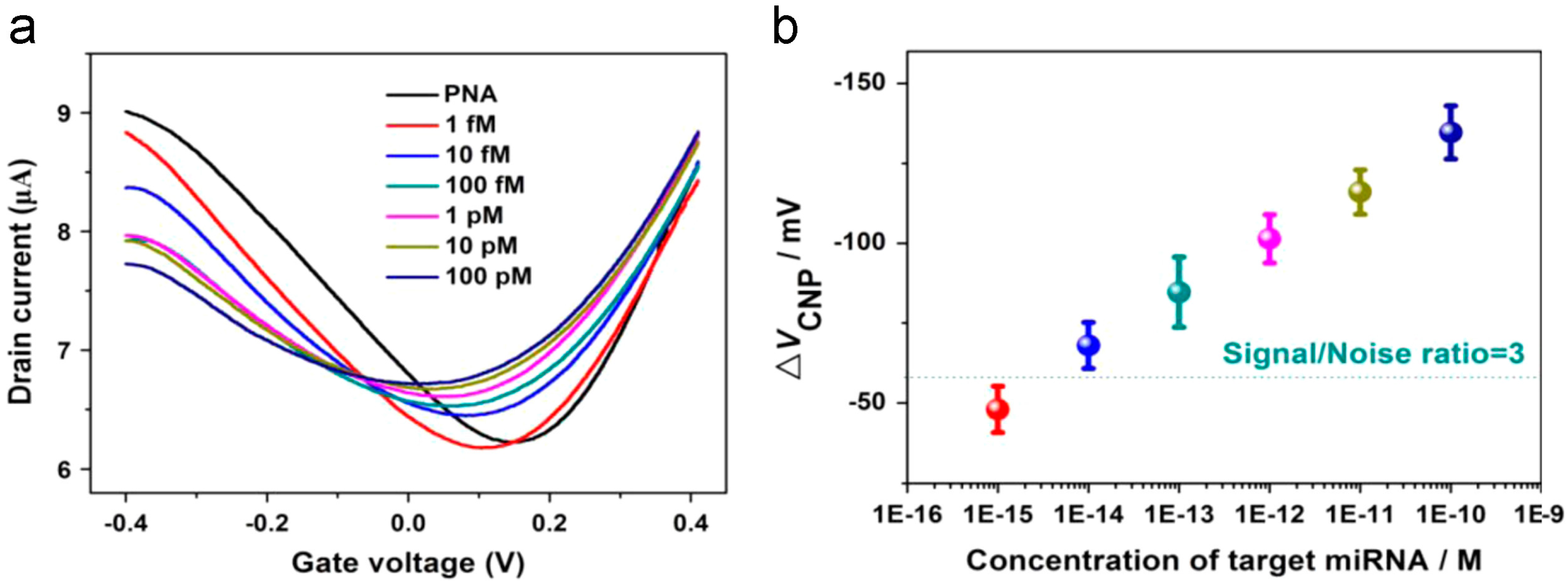Due to its high carrier mobility, graphene is considered a suitable material for use in field-effect transistors. However, its application to immunosensing of small molecules is still elusive.
A graphene field effect transistor (GFET) is composed of a graphene channel between two electrodes with a gate contact to modulate the electronic response of the channel ( Figure 1 ). The graphene is exposed to enable functionalization of the channel surface. The resistivity of graphene is usually expressed per thickness unit, i.e. The so-called sheet resistance: being RCH the resistance of the graphene channel, and W and L1 the width and inner length of the graphene channel, respectively. The field-effect mobility (μFE) can be calculated by using the following equation: where:. g = dδ/dV. Energy Dissipation in Graphene Field-Effect Transistors Marcus Freitag,. Mathias Steiner, Yves Martin, Vasili Perebeinos, Zhihong Chen, James C. Tsang, and Phaedon Avouris IBM TJ Watson Research Center, Yorktown Heights, New York 10591 Received December 23, 2008; Revised Manuscript Received March 3, 2009 ABSTRACT. Herein, a graphene field effect transistor (GFET) was constructed on an optic fiber end face to develop an integrated optical/electrical double read-out biosensor, which was used to detect target single-stranded DNA (tDNA). Two isolated Au electrodes were, respectively, prepared as the drain and sou.
Abstract: The past decade has seen rapid growth in the research area of graphene andits application to novel electronics. With Moore's law beginning to plateau,the need for post-silicon technology in industry is becoming more apparent.Moreover, existing technology is insufficient for implementing terahertzdetectors and receivers, which are required for a number of applicationsincluding medical imaging and security scanning. Graphene is considered to be akey potential candidate for replacing silicon in existing CMOS technology aswell as realizing field effect transistors for terahertz detection, due to itsremarkable electronic properties, with observed electronic mobilities reachingup to $2 times 10^5$ cm$^2$ V$^{-1}$ s$^{-1}$ in suspended graphene samples.This report reviews the physics and electronic properties of graphene in thecontext of graphene transistor implementations. Common techniques used tosynthesize graphene, such as mechanical exfoliation, chemical vapor deposition,and epitaxial growth are reviewed and compared. One of the challengesassociated with realizing graphene transistors is that graphene issemimetallic, with a zero bandgap, which is troublesome in the context ofdigital electronics applications. Thus, the report also reviews different waysof opening a bandgap in graphene by using bilayer graphene and graphenenanoribbons. The basic operation of a conventional field effect transistor isexplained and key figures of merit used in the literature are extracted.Finally, a review of some examples of state-of-the-art graphene field effecttransistors is presented, with particular focus on monolayer graphene, bilayergraphene, and graphene nanoribbons.
Submission history
From: Mohamed Warda [view email][v1]
 Mon, 19 Oct 2020 13:59:47 UTC (6,280 KB)
Mon, 19 Oct 2020 13:59:47 UTC (6,280 KB)Full-text links:
Download:
Current browse context:
References & Citations
Field Effect Transistor Circuits

arXivLabs is a framework that allows collaborators to develop and share new arXiv features directly on our website.
Both individuals and organizations that work with arXivLabs have embraced and accepted our values of openness, community, excellence, and user data privacy. arXiv is committed to these values and only works with partners that adhere to them.
Have an idea for a project that will add value for arXiv's community? Learn more about arXivLabs and how to get involved.
Graphene Fet Biosensor
